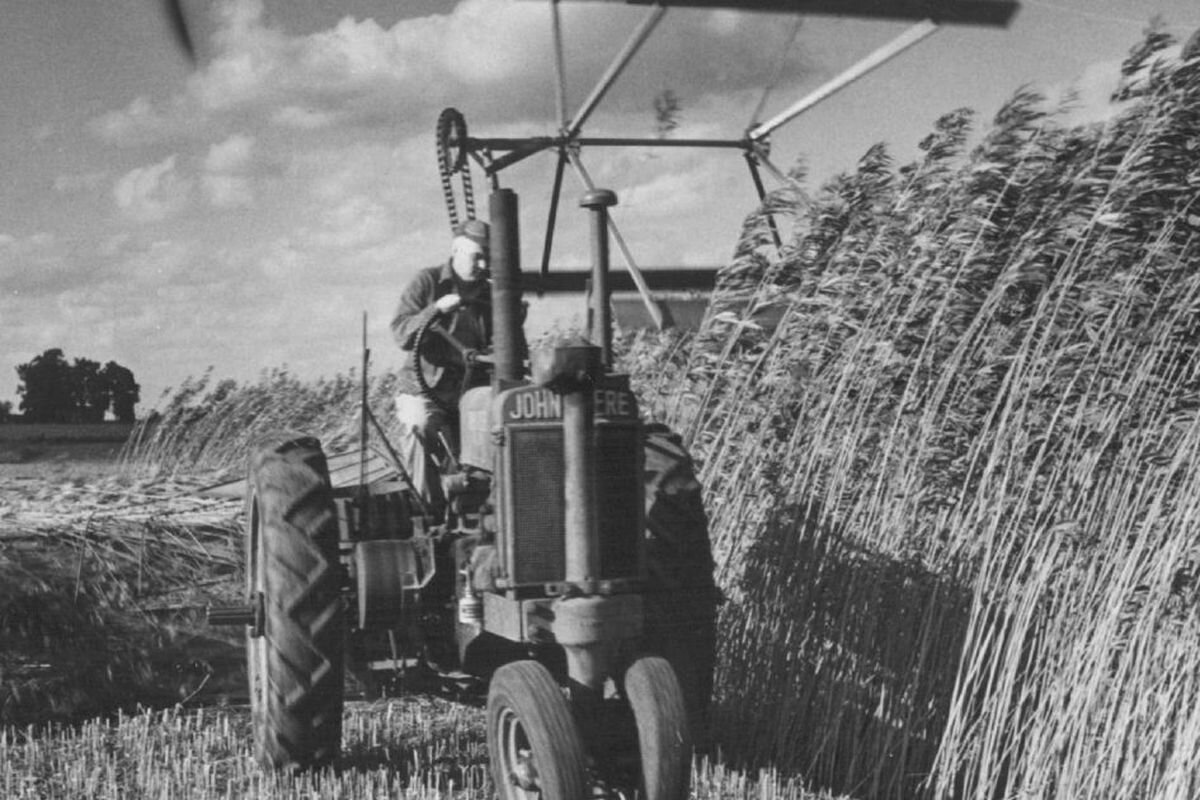Hemp for Victory: How Hemp Can Help in Times of Crisis
In 1937 cannabis was successfully scapegoated by an extremely effective propaganda campaign mounted by the United States government. In 1914, at the start of the Great War, the American south was experiencing an influx of immigrants in the aftermath of the Mexican revolution. Although hemp had been in America since before our forefathers crossed the Atlantic, Mexican immigrants became closely associated with the devil’s weed and propaganda. After the alcohol prohibition following the First World War, and the subsequent depression that led many to drink, the head of the Federal Bureau of Narcotics (precursor to the DEA), Harry Anslinger was reaching for a way to remain relevant, and cannabis—now referred to by its Mexican moniker, marijuana, as a way to heighten fear at a time when immigration threatened the job security of many Americans—was a perfect substitute.
Until, that is, our boys went back to war and everyday necessities became much more difficult to procure. When faced with domestic and military shortages, FDR directed his Department of Agriculture to reach out and beg farmers to replant their cannabis crops for the good of their fellow countrymen. Despite the FBN director’s ludicrous claims of the danger cannabis posed to the youth of America, the federal government could not deny the seemingly infinite usefulness of its non-psychoactive twin. Fear mongering had led American citizens to forget hemp’s many applications—some didn’t even realize that the cannabis found in pharmacies across the country was the same plant as the Marijuana that was endangering the youth of America! But as supply chains were broken and the military faced shortages, the government sought to remind farmers of the crop’s utility. (One great example of supply chain disruption would be the Japanese invasion of the Philippines, which had been the United States’ biggest supplier of plant fiber). The government was looking for “alternative sources of rubber, tin, tungsten, hemp, and other vital supplies” and joined Canada and the UK in creating the “Raw Material Purchase Board.”
In 1942, a fourteen minute film titled Hemp for Victory was produced by the Department of Agriculture and released to encourage farmers—particularly in states like Kentucky and Wisconsin—to return to hemp production and offered instructions on how to do so. Hemp could be used for making sails for naval ships, parachutes for army troops, and hempseed oil could be used as an aviation lubricant. (Not to mention the fabric for clothing, paper for letter writing, and other everyday artifacts that were needed back home). Farmers in Illinois, Indiana, Iowa, Minnesota, and Wisconsin were given seeds and subsidies and set about cultivating cannabis once again—the Commodity Credit Corporation footed the high registration taxes set by the Marijuana Tax Act. In 1942, 37,000 acres were planted and the target for 1943 was set for over 50,000 acres. By 1944, as the war was coming to a close, 28 of the 42 hemp mills were closed down and program acreage was cut by 60%.
After the war ended prohibition again became the status quo. National Guard members and local law enforcement agencies spent time and taxpayer dollars stamping out all botanical remnants. The government denied having any part in promoting hemp farming. The original film was all but lost until 1989 when hemp activist Jack Herrer (yes, as in the Cannabis Cup winning strain) somehow obtained VHS copies. In 1990 a hemp researcher named John Birrenbach was able to confirm the government’s role when he found an accomplice at the National Archives who sold him an official government copy. Last year Hawaiian Representative (and former Democratic presidential nominee) Tulsi Gabbard introduced H. R. 3652: Hemp for Victory Act of 2019, named for the long forgotten wartime government program, to incentivize small business and family farm hemp production and expand research into the plants many benefits. Hemp’s versatility means that solutions for everything from packaging to beauty products can be found right here at home, and higher demand will mean lower prices—the more people buying hemp-based plastic, the cheaper hemp-based plastic products become. (Not too mention the fact that hemp is more sustainable than most other materials, a major concern for environmentally conscious consumers).
I bring this up now for a reason. The country is again in crisis, and companies from coast to coast will be experiencing supply chain breakdowns. Between the 2018 Farm Bill and the 2019 Hemp for Victory Act the hemp industry is well positioned to take off, and all Americans should be taking note of this. Support your local hemp farmers. Invest in farms and businesses right here in the US. Encourage environmentally responsible solutions. Help hemp score a victory!


